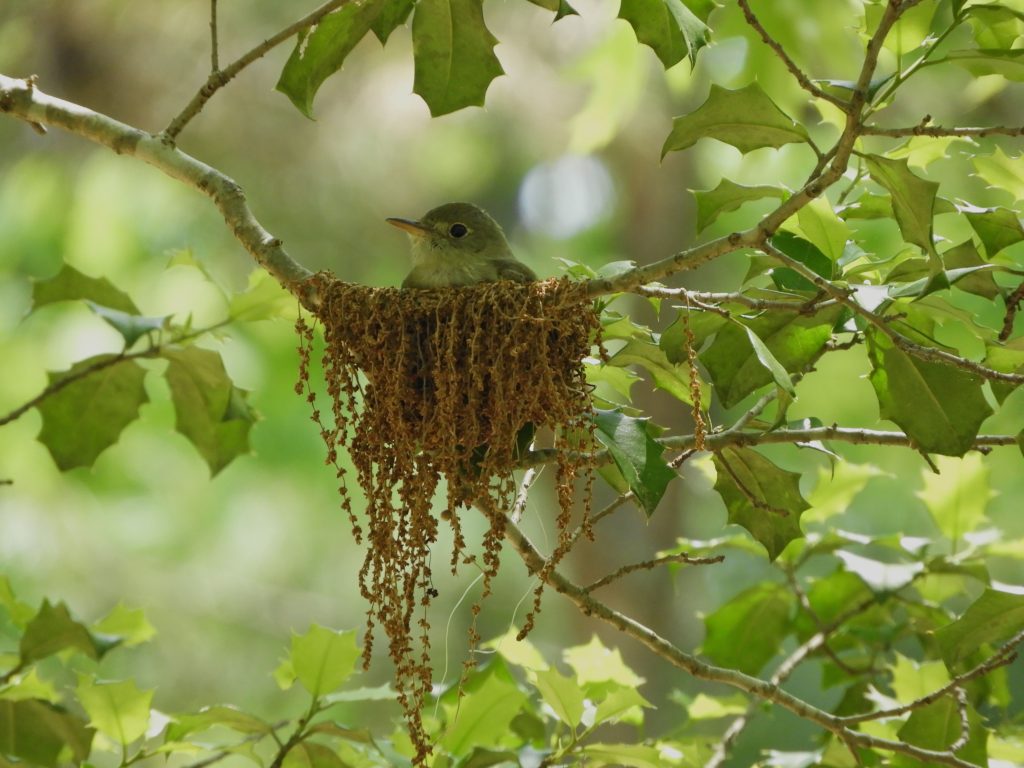May 21 2018, Cape May, Heislerville, and Belleplain Forest, NJ. This was our first of three days birding on Cape May, New Jersey, a birding hot-spot largely unnoticed and unappreciated by Canadian birders. It took us a full day of driving to get here yesterday, much of it through breath-taking, spring-green Appalachia. So today, Monday, as an antidote to eleven hours in the car we spent eleven hours birding.
My companion Lyn had seeing a Red Knot on her list of lifelong ambitions, one Red Knot would be enough she told me. Unfortunately they don’t come in ones, she had to make do with several thousand at a time.
The Red Knot is a strikingly colourful and compact shorebird with a story, some of it jaw-dropping and some of it hand wringing. On the jaw-dropping side is the bird’s breeding biology, notably the almost incomprehensible 15,000 kilometer, semi-annual migration from the far reaches of South America to its breeding ground shores of Canada’s Arctic Ocean (and back); a journey made in three or four stages with non-stop flights between each refueling stop.
On the hand-wringing side is the knots’ dependence for food at each stage of its migration; at this mid-Atlantic stop they depend on the billions of eggs being laid along the shoreline by Horseshoe Crabs. Saddly a few human generations ago, came the numbskull notion to harvest (a pretty word for an ugly practice) and grind up the crabs for use as agricultural fertilizer. Catastrophic over-harvesting meant fewer eggs to feed Red Knots and less food meant lower breeding success. Ultimately, over the last half-century, the knot populations crashed by something like ninety percent; presumably the Horseshoe Crab population fared no better.
It is still possible to see Red Knots in breathtakingly huge numbers here on the western shores of Cape May, but it is sobering (and hand-wringing) to contemplate what has been lost and what this scene might have looked like a century ago.
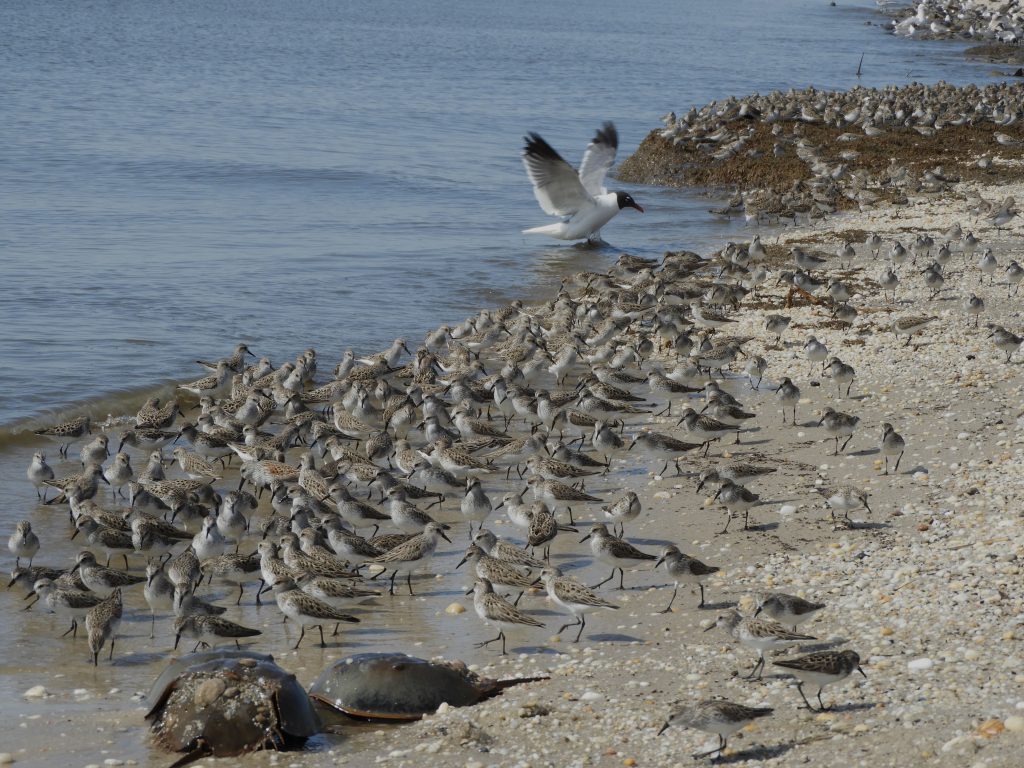
Lyn and I watched some of the thousands of those Horseshoe Crabs tumbling in the waves and hauling themselves ashore to multiply. Around them were hundreds upon thousands of shorebirds, particularly Red Knots, Ruddy Turnstones, Semi-palmated Sandpipers and Laughing Gulls waiting to feast on the eggs. We were almost speechless witnesses to one of the world’s greatest bird spectacles.
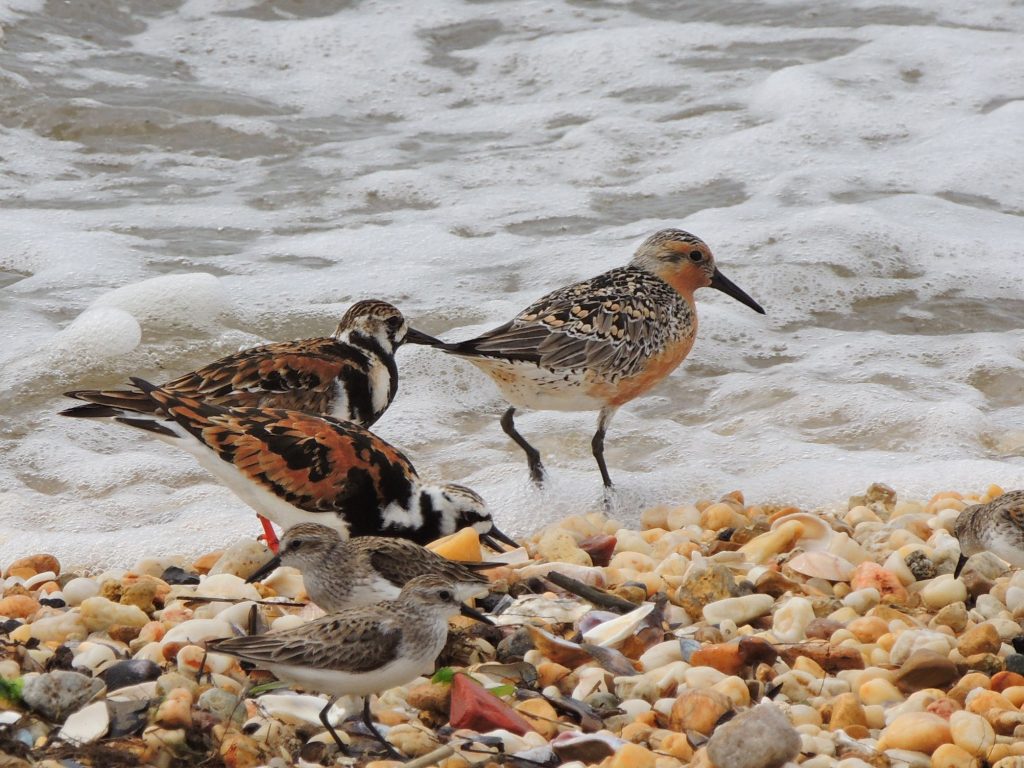
Our shorebirds didn’t stop at knots and turnstones. Just outside the scattered coastal village of Heislerville there’s a smallish lagoon threaded with sandbars. At high tide when the thousands of acres of Delaware Bay mudflats are underwater, the lagoon’s sandbars and shingle banks are a gathering place for thousands upon thousands of Dunlin, Least Sandpipers, Forster’s Terns, Common Terns, Black Skimmers, plovers, and even the odd Snowy Egret, all waiting for the tide to recede.
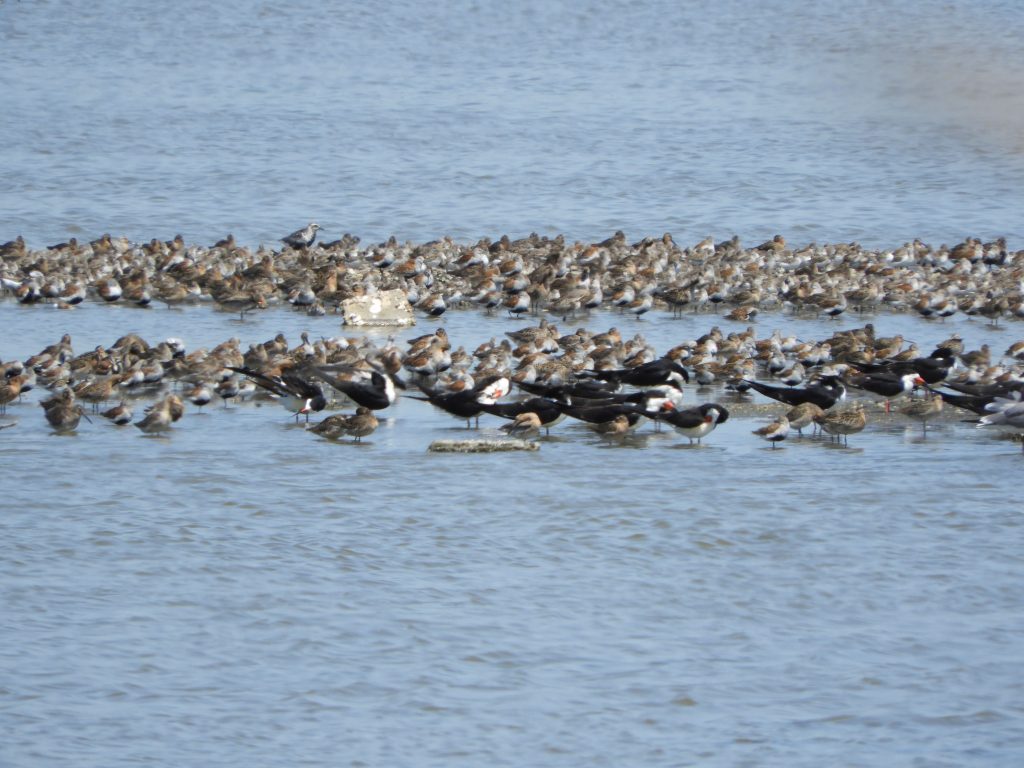
As we studied the crowds I found myself shaking my head at the near preposterousness of it all, seeing birds in front of us which at other times of year we might meet in ones, twos or maybe a dozen; yet they were here in uncountable numbers. Dotted among them were many Black-bellied Plovers, standing to attention in greys and white with a crisp black morning-coat, dressed as if for a royal wedding. Against the almost baffled what-shall-we-do-now skitterings of their Semi-palmated Plover cousins, Black-bellied Plovers seemed to represent deliberate confidence.
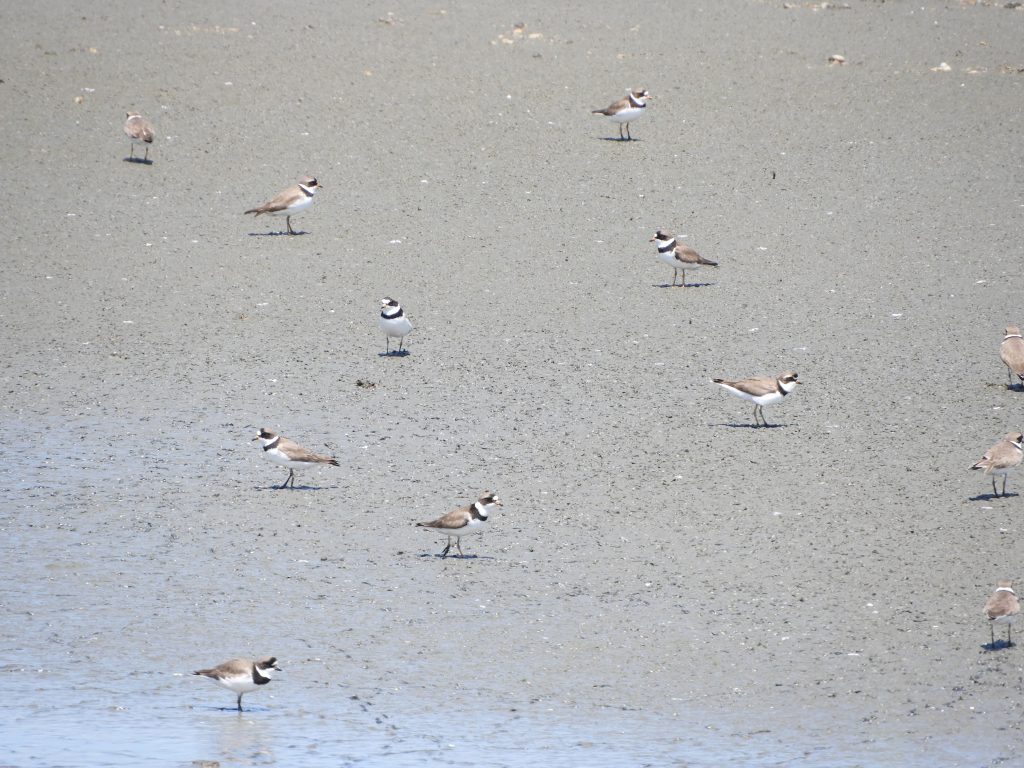
To write of a Bird of the Day from among more than eighty species seen is hardly possible, yet amongst them the Red Knots and the Black-bellied Plovers both brought out the wow! response, so I’ll let it rest there. But equally engaging, compelling and wonderous were: Willets, American Oystercatcher, Clapper Rail, Little Blue Heron, Black Scoter, Acadian Flycatcher and Olive-sided Flycatcher. What a day!
